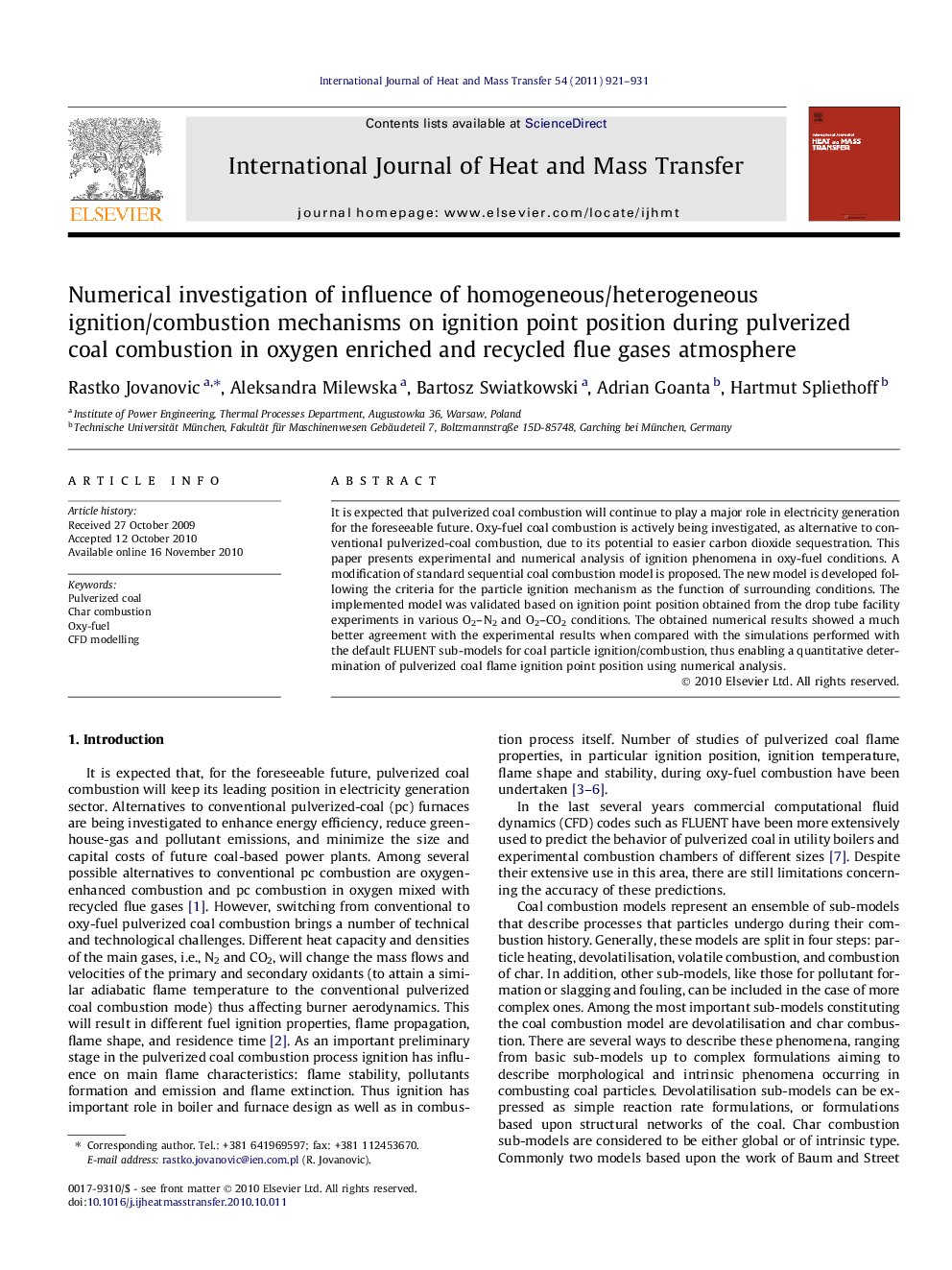| Article ID | Journal | Published Year | Pages | File Type |
|---|---|---|---|---|
| 660333 | International Journal of Heat and Mass Transfer | 2011 | 11 Pages |
Abstract
It is expected that pulverized coal combustion will continue to play a major role in electricity generation for the foreseeable future. Oxy-fuel coal combustion is actively being investigated, as alternative to conventional pulverized-coal combustion, due to its potential to easier carbon dioxide sequestration. This paper presents experimental and numerical analysis of ignition phenomena in oxy-fuel conditions. A modification of standard sequential coal combustion model is proposed. The new model is developed following the criteria for the particle ignition mechanism as the function of surrounding conditions. The implemented model was validated based on ignition point position obtained from the drop tube facility experiments in various O2-N2 and O2-CO2 conditions. The obtained numerical results showed a much better agreement with the experimental results when compared with the simulations performed with the default FLUENT sub-models for coal particle ignition/combustion, thus enabling a quantitative determination of pulverized coal flame ignition point position using numerical analysis.
Related Topics
Physical Sciences and Engineering
Chemical Engineering
Fluid Flow and Transfer Processes
Authors
Rastko Jovanovic, Aleksandra Milewska, Bartosz Swiatkowski, Adrian Goanta, Hartmut Spliethoff,
